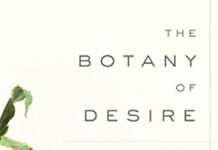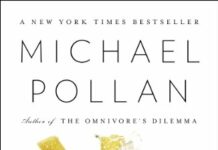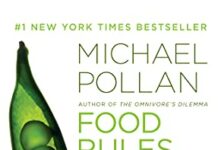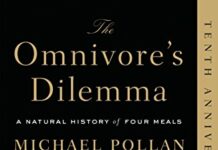
Ebook Info
- Published: 2008
- Number of pages: 268 pages
- Format: PDF
- File Size: 2.93 MB
- Authors: Michael Pollan
Description
#1 New York Times Bestseller from the author of This is Your Mind on Plants, How to Change Your Mind, The Omnivore’s Dilemma, and Food Rules Food. There’s plenty of it around, and we all love to eat it. So why should anyone need to defend it? Because in the so-called Western diet, food has been replaced by nutrients, and common sense by confusion–most of what we’re consuming today is longer the product of nature but of food science. The result is what Michael Pollan calls the American Paradox: The more we worry about nutrition, the less healthy we see to become. With In Defense of Food, Pollan proposes a new (and very old) answer to the question of what we should eat that comes down to seven simple but liberating words: “Eat food. Not too much. Mostly plants.” Pollan’s bracing and eloquent manifesto shows us how we can start making thoughtful food choices that will enrich our lives, enlarge our sense of what it means to be healthy, and bring pleasure back to eating.
User’s Reviews
Reviews from Amazon users which were colected at the time this book was published on the website:
⭐Food scientists make “fake foods” or “foodlike substances” through the process of adulteration. The most important thing about any food is not its nutrient content, but its degree of processing, and “refining” is especially deleterious, or so says Michael Pollan in In Defense of Food. For Pollan, refined flour is the first industrial fast food.But the desire for white bread predated the invention of roller mills, as did processes for separating the starchy endosperm from the bran. In a recent paper in the Journal of Food Science, colleagues confirmed consumer preferences for refined over whole wheat bread. We make white bread because that’s what people want.Pollan erroneously believes that grains are refined to extend their shelf life by making them less nutritious to pests. However, refining was often initially done to remove anti-nutritional factors from plant foods, and to his credit, Pollan provides the example of soy processing to inactivate trypsin inhibitor. Cassava, the third largest source of carbohydrates for human food, is poisonous unless processed properly.Pollan believes that we have an ancient evolutionary relationship with the seeds of grasses and fruits of plants. Anthropomorphically speaking, “I’ll feed you if you spread around my genes.” With the exception of succulent fruits, the co-evolution of plants and animals has been a struggle, with plants doing their best to evolve ever greater defense mechanisms to deter animals from eating them. Man has an ancient relationship with the plant genus Nicotiana, having been smoking it since 2000 B.C.E. Should we accept then that smoking is healthy?It’s ironic that the book’s cover illustration is of lettuce, which we eat at a very young stage to avoid an abundance of bitter compounds produced by the plant as it matures. Pollan suggests we eat only those items that would be recognized as food by our great-great grandmother. Many of the plant foods my great-great-grandmother ate were made edible through selective breeding programs to detoxify them. The 14 or so thousand years since the Neolithic revolution is but a blink in evolutionary time. The co-evolution of plants and humans during this period has largely been directed by the later, as was so eloquently explained in Pollan’s Botany of Desire.The book certainly is a manifesto, and an upper-middle class one at that. Oh that we could all live in Northern California, where fresh fruits and vegetables are available locally and year round.My great-great grandmother, and I suspect Mr. Pollan’s too, survived the winter months mainly on stored root crops, lots of onions. With the invention of canning, generations from my great-grandmother to the present have “put up” more perishable fruits and vegetables to extend their seasons. But despite the provenance and the satisfaction one derives from it, home canning is hardly an option for many.One non-food, as defined by Pollan, that my great-great grandmother certainly did not eat often or at all is chocolate in its present form. Perhaps I’m partial to this one as chocolate making is among my professional expertise. You see, chocolate is “refined” using steel roller mills, and despite cacao’s ancient origins predating the Maya culture, solid eating chocolate is a “food-like substance” as defined by Pollan.Pollan impugns scientific research suggesting cacao may have health benefits, referring sarcastically to the Mars Corporation’s endowment of a faculty chair in “chocolate science” at the University of California-Davis, but readily accepts “abundant scientific evidence for the health benefits of alcohol.” My biggest criticism of the book is Pollan’s selective use of science to support his opinions.Though critical of the methodology used in the Nurse’s Health Study and the Women’s Health Initiative, which involved over one hundred thousand women followed for eight years or more, Pollan accepts unquestioningly the science of Kerin O’Dea, who observed ten Australian aborigines for seven weeks. The apparent genius of the study was that when it was over, Dr. O’Dea had no idea what caused the improvements in the group’s health, though Pollan readily accepts the diet-disease link, ignoring the possibility that an increase in physical exercise or even the placebo effect could have explained the short-term results. An alternative hypothesis is that the group’s health improved because they gave up alcohol and ate foods mostly of animal origin, contrary to Pollan’s dietary suggestions, but we will never know since “we can’t extract from such a study precisely which component of the Western diet we need to adjust.”Along with the Neolithic revolution modern food preservation seems to have become man’s second fall from grace. But with an expanding world population, food science will become increasingly important for better utilization of finite resources. That’s why the World Food Prize selected Dr. Phil Nelson as its 2007 laureate.The complexity of human-food interactions is undeniable, but the same science that led to the solution for deficiency diseases has also implicated trans fats in present maladies, and can contribute to improved health. Though he plays fast and loose with the science, Pollan’s dietary advice – eat food, not too much, mostly plants – will probably do no harm. Thirty years ago, a food science instructor of mine needed only two words – variety and moderation – but added that two words hardly a book make (and they certainly cannot be sold for $21.95). However, for what it says about the profession, it’s a book every food scientist should read.
⭐As a fan of Michael Pollan’s previous books, I was excited to read, In Defense of Food: An Eater’s Manifesto. Not quite a diet book, Pollan imparts nutrition common sense as he breaks down various theories as to why American’s have become so fat.The first half of Pollan’s book is dedicated to understanding nutritional advice given in American over the last century. Pollan picks apart various “ground breaking” nutritional studies and their impact on how we eat. A common thread is how we have moved from our parents and culture telling us what to eat, to putting our faith in the government and nutritional science. Pollan explains how in many ways nutrition is not an accurate science and how many of the top studies are deeply flawed.Pollan sites 1977 as a year of major shift in attitudes towards nutrition. This was when we made a dramatic shift away from home cooked meals, to the science of pre-packaged foods that were supposedly not only more convenient, but more nutritious. This struck a cord, as I was born in 1977 and I can personally attest to being raised by a working mother, who didn’t like or have time to cook, so she put her faith in the food industry. We ate pre-packaged meals many days a week and she didn’t breast feed me, because she was urged by doctors to use the “more nutritious” formula. We followed the trends, like low-fat or low-carb. When sugar substitutes came into vogue, we jumped on those band wagons. If the FDA approves it, it has to be okay for us, right?Pollan’s detailed explanation of food science in America and its crossover with farming and government, is enlightening. He provides a clear context for nutrition ideals in America, before transitioning into his diet advice in the second half of the book.To make it easy, Pollan offers three pieces of diet advice.Eat food, not too much, mostly plants.He gleaned this advice from studying other cultures and studying our own culture, prior to the turn of the century. He was trying to figure out what created the decline in American eating habits and also, what type of eating habits should we strive towards.Eat Food really clicked with me. It’s Pollan’s phrase for avoiding processed food. Processed food seems to be the root of a majority of our ills. His advice is that if our great-grandparents wouldn’t recognize an item in a grocery story, then it probably isn’t food. It’s too processed. If you don’t recognize the ingredients or the ingredient list is a huge paragraph, it probably is too processed as well. He goes a step further to call processed foods, “food like” to imply that they are not actual food. Admittedly, this had me checking labels at the grocery store this week and thinking twice about the prepackaged items already in my cupboards.Not Too Much is where Pollan explores the concept of consuming far less calories, which in many cultures seems to be optimum for health. The thing that really stuck with me in this section is the idea that part of our overconsumption stems from a lack of proper nutrition. Farming practices are yielding more food, but it is less nutritious and less of a variety than what our ancestors ate. We may have more, but it’s less nutritionally dense, so we consume more to try to find the vitamins that we are lacking. The advice is to seek out a varied diet and organic produce that tends to be grown in more fertile fields.Mostly plants isn’t Pollan’s call for vegetarianism. Although, it seems that a healthy diet is one that treats meat as a side dish and the vegetables as a main. We are now eating more meat than ever and the meat isn’t as high of quality as it was in previous generations. Pollan suggests less meat, but when consumed, pick higher quality and animals that were fed what they would have eaten in nature. He also suggests wild game as being the more nutritionally dense choice. To roughly quote Pollan, “We are what we eat and what we eat eats.”As usual, Pollan makes a compelling argument. I was even motivated, before finishing the book, to join a local CSA (community supported agriculture) program, where I will get a fresh produce box every week from local farms. It’s called Abundant Harvest Organics. I did it years ago and loved it. Thank you to Michael Pollan for giving me the motivation to rejoin!Like my review? Check out my Blog!
⭐A very persuasive treatise on food. Pollan explains why nutritional advice has not worked out well over the years – individual foodstuffs contain so many different substances that it’s hard to know what are the active ingredients, as it were, and when it comes to experimenting and leaving something out of a diet or putting something in, there’s the whole field of what else we eat or don’t eat (to compensate) to consider too. So this is like looking for a needle in a haystack. But then we find that actually there’s a lot of skin in this game for food manufacturers who’d like to be able to market processed foods (rather than the simple and pure foodstuffs they are made from) because this is where there’s value add in this market and they’d like to market health claims for their processed foods – which also seems generally to be possible…And while humans have evolved to live off a very wide variety of diets in a healthy way, the Western diet hasn’t historically been one of them, as we’ve moved towards chemical treatment of agriculture (impoverishing our basic foodstuffs) and have moved from leaves to grains and then onto refined grains – partly simply for their keeping qualities (if the nutrients aren’t there, they’ll be easier to preserve from decay)…The final part says what we can do about all this when we eat. Simple messages: avoid the processed stuff; spend more on food and more time preparing (and you will eat less); eat less meat; go for farm shops not supermarkets; and grow your own….Perhaps a little disappointing, but no doubt true. I will also personally be tucking into cheese and olive oil as recommend in Tim Spector’s book The Diet Myth. But that book is rather less of a strong reading experience than this!…
⭐Michael’s book is witty, informative & simple common sense. It is written in a conversational style & I had a good giggle. I’ve been concerned & educating myself about food & “nutritionism” since 2005. I am guilty of nutritionism but like Michael’s book, I feel like I have come full circle with my eating habits. Eat local, grow your own & eat mainly plants. I always felt so confused about meat, veganism & vegeterianism. Michael gives me some comfort when he says, meat is a side dish. He makes sense of all the nonsense out there & clearly elucidates the links between government agencies, food corporations & marketing. Although the example he gives is mainly about America, being Malaysian I can relate to the underlying & pretty much universal patterns of his book. Malaysians have one of the highest rates of obesity, diabetes, heart disease & cancer in Southeast Asia. Our sugar is heavily subsidised & I think there is palm oil in virtually everything. We are after all, a major palm oil producer in the world. Thanks Michael for making sense out of nonsense!
⭐great book with some interesting insights into how we view and treat food . Fascinating how the big corporations manufacturers and politicians can manupulate science /statistics to their own ends
⭐The author says, “Eat food, not too much and mostly plants” and offers a quick shortcut to healthy eating, suggesting that you shouldn’t eat anything that your great grandmother wouldn’t recognize as food.Following the Great Grandmother rule blanks out a lot of options (and removes most of the profitability of the agro-food processing industry) but he shows that it is still just viable if a shopper frequents farmers markets or avoids the packaged goods in the central aisles of supermarkets.He also interestingly shows how the food industry plays food science marketing with features such as “added fibre”, “added omega3” etc. while ignoring the more beneficial natural sources.
⭐I will give this book full marks – not because its so amazing, as it really just states what I thought was obvious – but because I was so surprised that only a few of his fellow Americans really knew what he was on about. I ‘ve never really been one for conspiracy theories but are there really so many people that are convinced that being obese is simply genetic and not related to eating too many burgers? There are those that want to keep the truth from a public struggling with diet related health issues and this book makes it all surprisingly clear. The French paradox, the Greek paradox (too much fat, alcohol +smoking) – and the elusive American paradox – it will all be revealed.
Keywords
Free Download In Defense of Food: An Eater’s Manifesto 1st Edition in PDF format
In Defense of Food: An Eater’s Manifesto 1st Edition PDF Free Download
Download In Defense of Food: An Eater’s Manifesto 1st Edition 2008 PDF Free
In Defense of Food: An Eater’s Manifesto 1st Edition 2008 PDF Free Download
Download In Defense of Food: An Eater’s Manifesto 1st Edition PDF
Free Download Ebook In Defense of Food: An Eater’s Manifesto 1st Edition





